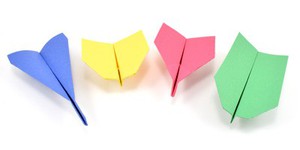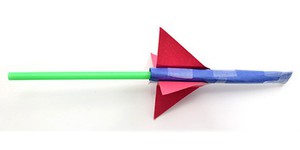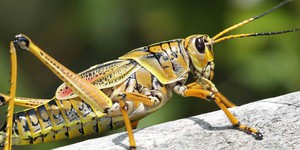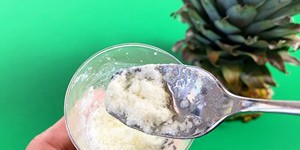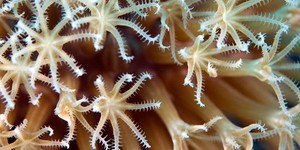Fifth Grade Lesson Plans (68 results)
Science Buddies' fifth grade science projects are the perfect way for fifth grade students to have fun exploring science, technology, engineering, and math (STEM). Our fifth grade projects are written and tested by scientists and are specifically created for use by students in the fifth grade. Students can choose to follow the science experiment as written or put their own spin on the project.
For a personalized list of science projects, fifth graders can use the Science Buddies Topic Selection Wizard. The wizard asks students to respond to a series of simple statements and then uses their answers to recommend age-appropriate projects that fit their interests.
Let us help you find a science project that fits your interests, with our Topic Selection Wizard.|
Select a resource
Sort by
|
Lesson Plan
Grade: 3rd-5th
10 reviews
Teach your students about the engineering design process with this fun lesson plan. They will design and build the tallest possible tower using nothing but paper and tape, but there's an additional twist on this classic activity. The tower must support a heavy weight at the top without collapsing! Teachers, note that middle school and high school versions of this lesson plan are also available. The 2021 Engineering Challenge is over, but you can still try this fun lesson with your students,…
Read more
NGSS Performance Expectations:
Lesson Plan
Grade: 3rd-5th
5 reviews
Vibrobots are tiny robots powered by a vibrating motor, like the type found in cell phones. In this lesson plan, your students will learn about engineering design as they build their own vibrobots from craft materials. No previous experience with robots is required!
Read more
NGSS Performance Expectations:
Lesson Plan
Grade: 3rd-5th
24 reviews
Are paper airplanes a nuisance in your classroom? They don't have to be! Those distractions can be a constructive learning opportunity: use them to teach your students about the engineering design process. In this fun lesson, you will be the "customer" ordering a paper airplane, and your student teams will be engineering companies that will manufacture planes. Before they start making planes, they need to define the criteria and constraints of this engineering problem.
Read more
NGSS Performance Expectations:
Lesson Plan
Grade: 3rd-5th
25 reviews
This lesson will introduce your students to the scientific method using a fun, hands-on activity.
A middle school version of this lesson plan is also available.
Read more
NGSS Performance Expectations:
Lesson Plan
Grade: 3rd-5th
4 reviews
There are many different ways to make slime. In this lesson plan, your students will use the engineering design process to design their own slime product. They will need to decide on the desired properties for their slime and then experiment to find the best recipe.
Read more
NGSS Performance Expectations:
New
Lesson Plan
Grade: 6th-9th
In this lesson plan, students will model the complex biologic manufacturing process. First, they will model the cellular expansion process that occurs in a bioreactor. Then, students will lyse the cells to isolate the proteins from the dyed cell debris. Lastly, they will model the advanced filtration process to purify proteins so they can be used as medicines.
Read more
NGSS Performance Expectations:
Lesson Plan
Grade: 2nd-5th
8 reviews
There are thousands of species of insects in our world, and each are adapted to survive in their habitat. In this activity, students will learn what an insect is and what some of their adaptations are. Then they will put their knowledge into play by "creating" an insect that is adapted to live in their assigned environment.
Read more
Lesson Plan
Grade: Kindergarten-5th
3 reviews
In this fun engineering lesson plan, your students will build a rocket-catching device to help a falling rocket land vertically without crashing, using simple and readily-available materials.
Middle school
and
high school
versions of this lesson plan are also available. This lesson was part of the 2025 Science Buddies Engineering Challenge.
Read more
NGSS Performance Expectations:
Lesson Plan
Grade: 5th
In this fun chemistry lesson, students will explore chemical reactions by mixing pineapple juice and milk. Students will observe whether the properties of milk change when it is mixed with pineapple juice, as well as how they change. They will then infer from their results whether a chemical reaction happened. In the process, they will not only learn about chemical reactions but also discover the importance of enzymes and their role in the human body.
Read more
NGSS Performance Expectations:
Lesson Plan
Grade: 4th-8th
3 reviews
What would your students do if your town's water supply was cut off due to an equipment failure or natural disaster? Inspired by
Global Problem Solvers: The Series,
in this lesson plan they will tackle a real-world engineering challenge by building a prototype of a device that can manually pump water during an emergency. They will also think like entrepreneurs and come up with a business plan for how their device could be produced, sold, and used in the real world.
This lesson is one of…
Read more
NGSS Performance Expectations:
Lesson Plan
Grade: 2nd-6th
5 reviews
By building an edible coral polyp, students will learn the anatomy of coral and be able to explain why corals are animals, rather than plants.
Read more
NGSS Performance Expectations:
|




